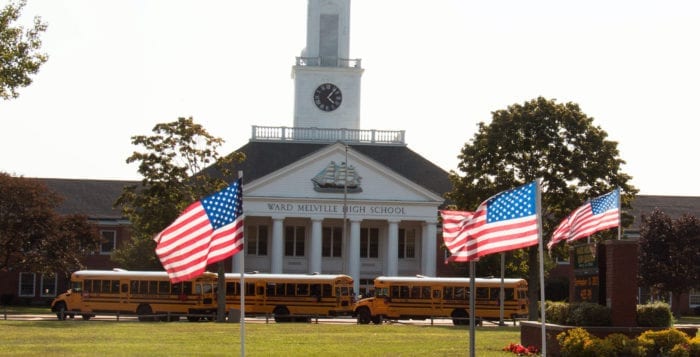By Donna Newman
At a recent meeting of the Three Village Drug & Alcohol Awareness Program — a support group that seeks to educate all and assist parents and family members of teens and young adults battling substance abuse — I spoke with a young mother of elementary-school-age children. She was there to learn about this growing danger that has taken so many lives in Suffolk County. She is afraid for her children. They are growing up in a society where drug overdose deaths have become routine. She wants to protect her children from becoming victims of substance abuse.
This mom has been on a crusade to make parents aware of the dangers, knowing that this is a Three Village problem and it will take community awareness and extensive effort to combat it. So she speaks to parents of young children wherever she finds them to encourage them to be part of the solution. She told me the majority response from parents is: “Not my kid. She’s an A student.” Or, “Not my kid, he’s an athlete.” Or simply, “My child would never get involved in that.”
I’m here to tell you that you need to take your head out of the sand.
The significant drug problem at Ward Melville High School when my sons were in attendance in the 1990s was not publicly acknowledged by the school district — or anyone else other than the parents whose children “got into trouble.” Mine did not. They were honor grads, heavily involved in extracurricular activities.
However, in a conversation with one of my sons, years after graduation, I learned he had used drugs with some regularity while in high school. It turned out I had been one of those clueless parents. But I was one of the lucky ones.
Lucky, because back then, when a teenager bought marijuana, it was just pot. It was not the cannabis of today, which may be laced with illicit and scary drugs by dealers seeking to hook kids on stronger stuff. Lucky, because he did not have a propensity, and his “recreational” use never rose to the level of addiction.
Full disclosure: As a college student in the 1960s I experimented with marijuana as well. My equally clueless mother discovered a small baggie of weed in my room. She trashed it, never saying a word to me. In that era, just knowing she knew was enough to get me to stop.
The school district has finally acknowledged the fact that addiction is a disease requiring treatment, not a moral lapse requiring punishment.
According to “School district welcomes new drug and alcohol counselor” in the July 20 edition of The Village Times Herald, the district has hired a substance abuse counselor. Heather Reilly, certified social worker, will be tasked with rotating through the secondary schools one day each week (including the Three Village Academy alternative high school program), providing substance abuse counseling, educating faculty about warning signs and drug lingo, and creating educational curriculum for sixth-graders in collaboration with elementary health teachers. She will also be available to work directly with families.
While this is a laudable first step, it’s not nearly enough. Change will not happen without a concerted community effort. Parents need to accept the fact that this is a real problem affecting Three Villagers across the cultural and economic spectrum. Yes, it could even be your child.
Folks must come to grips with the fact that chemical dependency is a potentially fatal illness and that 90 percent of sufferers go untreated. They need to acknowledge that kids who are addicted to alcohol and/or opioid drugs are not “bad” kids. They are youngsters whose brains are not fully developed, who made bad choices that led to a tragic outcome. It’s time for all of us to learn all we can about prevention and to come together to end this plague.
There’s a lot you can do. For starters, attend the monthly meetings at the Bates House in Setauket. Dates and times are listed on Facebook on the Three Village Drug & Alcohol Awareness Parent Group page — along with other helpful information. Learn when and how to begin to talk to your child about the dangers of alcohol and drugs and your family’s rules concerning underage drinking and substance abuse. A good place to begin is at New York State’s online site www.talk2prevent.ny.gov.
The next meeting at the Bates House, located at 1 Bates Road in Setauket, will be held Sept. 24 at 7 p.m.
Donna Newman, a freelance writer, is a former editor of The Village Times Herald.





